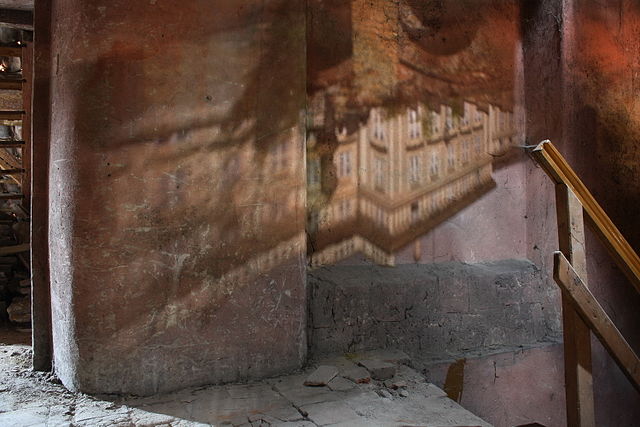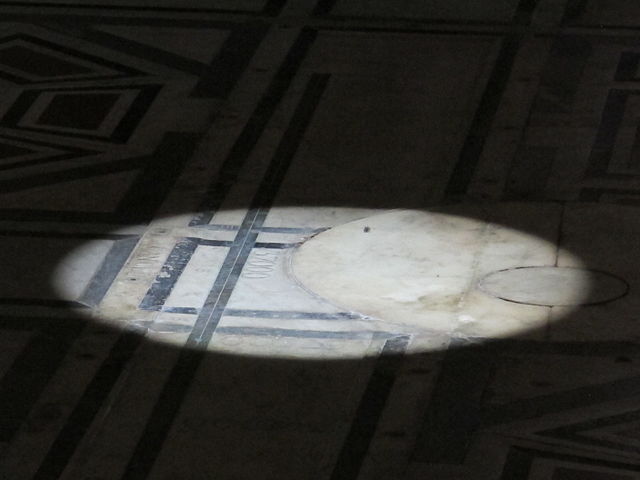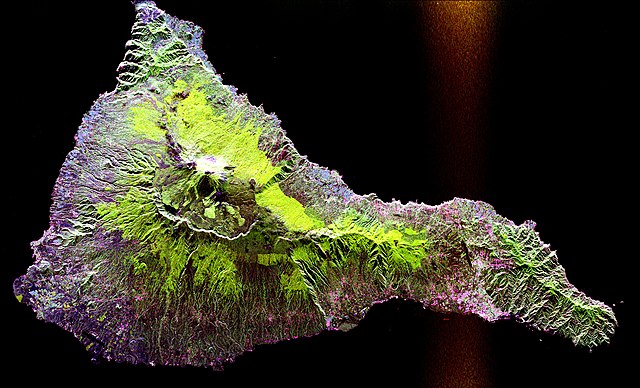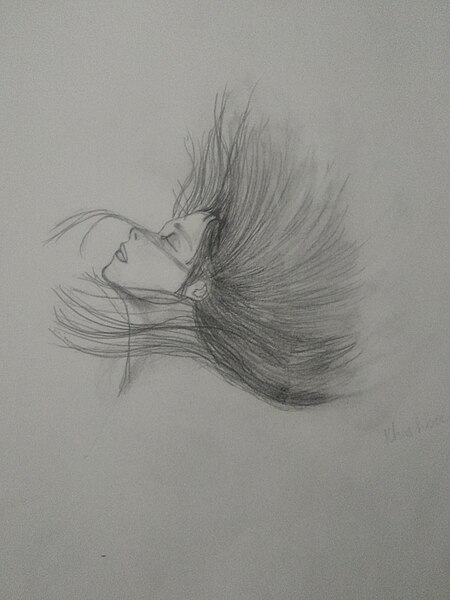A camera obscura is a darkened room with a small hole or lens at one side through which an image is projected onto a wall or table opposite the hole. The image of lensless camera obscuras is also referred to as "pinhole image".
Illustration of the camera obscura principle from James Ayscough's A short account of the eye and nature of vision (1755 fourth edition)
An image of the New Royal Palace at Prague Castle projected onto an attic wall by a hole in the tile roofing
A camera obscura box with mirror, with an upright projected image at the top
The gnomon projection of the sun's shape on the floor of Florence Cathedral during the solstice on 21 June 2012
An image is a visual representation. An image can be two-dimensional, such as a drawing, painting, or photograph, or three-dimensional, such as a carving or sculpture. Images may be displayed through other media, including a projection on a surface, activation of electronic signals, or digital displays; they can also be reproduced through mechanical means, such as photography, printmaking, or photocopying. Images can also be animated through digital or physical processes.
A synthetic-aperture radar image acquired by the SIR-C/X-SAR radar on board the Space Shuttle Endeavour shows the Teide volcano. The city of Santa Cruz de Tenerife is visible as the purple and white area on the lower right edge of the island. Lava flows at the summit crater appear in shades of green and brown, while vegetation zones appear as areas of purple, green, and yellow on the volcano's flanks.
2D image






